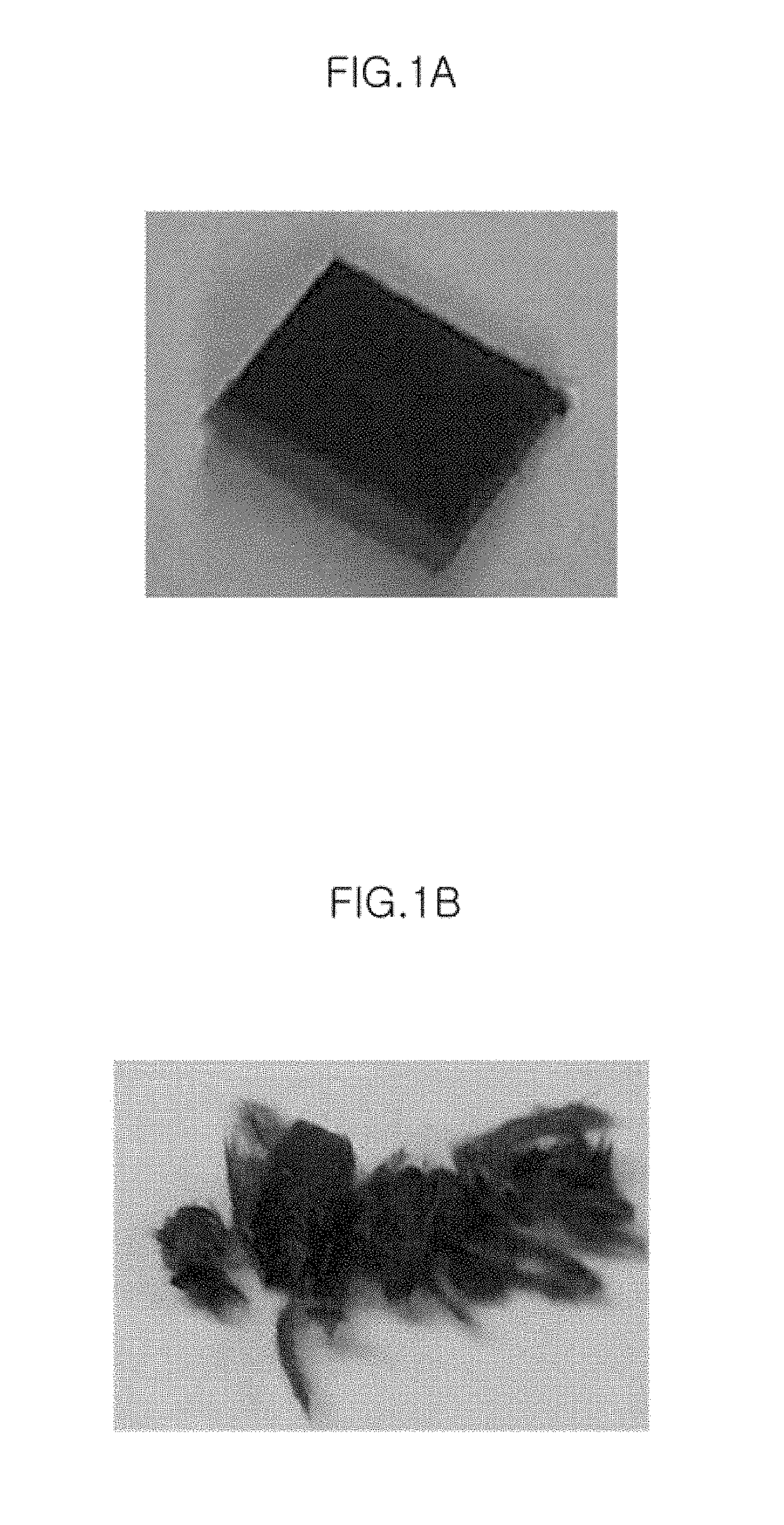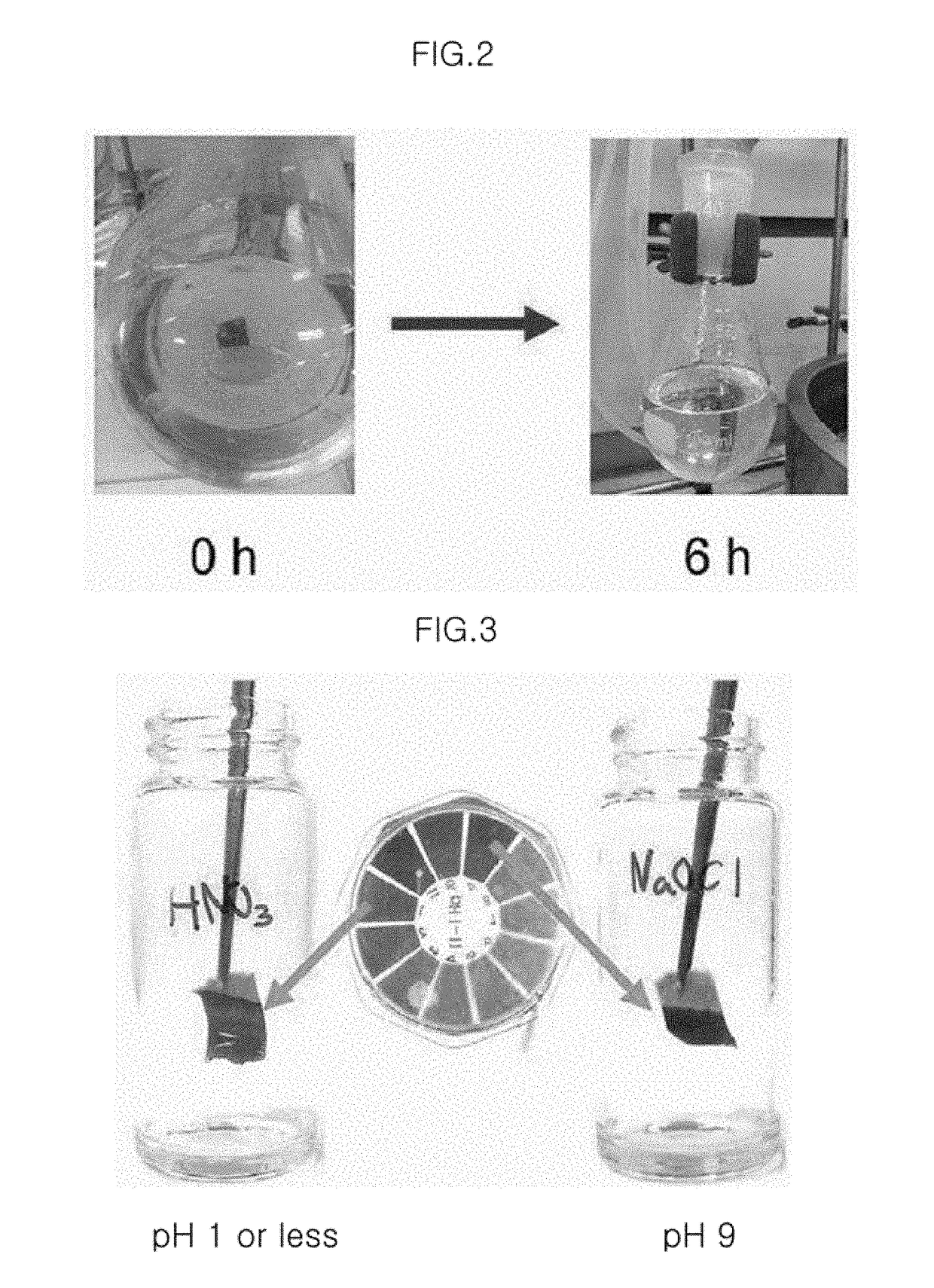Method and composition for depolymerization of cured epoxy resin materials
a technology of epoxy resin and composition, which is applied in the direction of aluminium oxide/hydroxide, textiles and paper, etc., can solve the problems of severe environmental pollution, undesirable difficulty in treating and reusing materials after use, and significant waste in terms of cost, so as to reduce processing costs and energy requirements, reduce environmental contamination or pollution, and increase depolymerization efficiency
- Summary
- Abstract
- Description
- Claims
- Application Information
AI Technical Summary
Benefits of technology
Problems solved by technology
Method used
Image
Examples
example embodiments
DESCRIPTION OF EXAMPLE EMBODIMENTS
[0115]Hereinafter, example embodiments of the present disclosure will be described in detail.
[0116]In one aspect, there is provided a composition for depolymerization of a cured epoxy resin material, the composition including a compound represented by the chemical formula of XOmYn (wherein X is hydrogen, alkali metal or alkaline earth metal, Y is halogen, m is a number satisfying 1≤m≤8 and n is a number satisfying 1≤n≤6), and a reaction solvent, wherein X is capable of being dissociated from XOmYn and Y radical is capable of being produced from XOmYn in the reaction solvent, as well as a method for depolymerization of a cured epoxy resin using the above said composition.
[0117]Surprisingly, it has been found by the present inventors that a cured epoxy resin material may be depolymerized easily and rapidly in the said composition including the above-specified compound in combination with the reaction solvent (particularly, H2O-based solvent) without u...
example 2
tion of Filler (Graphene)-Containing Cured Epoxy Resin Material Using Aqueous Sodium Hypochlorite (HOCl) Solution and Separation of Filler (Graphene)
[0214]The cured epoxy resin material used in Example 2 consists of a cured epoxy resin obtained by using a cresol novolak glycidyl ether type epoxy compound and a curing agent containing an aromatic amine group, and graphene. Since such cured epoxy resin material uses a novolak epoxy compound and an aromatic curing agent, it is generally known to have high difficulty in decomposition.
[0215]0.1 g of the cured epoxy resin material is introduced to 70 mL of 2 mol / L aqueous sodium hypochlorite solution contained in an open glass container, followed by agitation at 70° C. No autoclave is used.
[0216]After 5.5 hours, it is shown that the epoxy resin is completely depolymerized (no epoxy resin residue is present after depolymerization as determined by thermogravimetric analysis (TGA)). Then, graphene in aqueous solution are separated through fi...
example 3
tion of Cured Epoxy Resin Material, CFRP Using Gaseous Aqueous Sodium Hypochlorite (NaOCl) Solution and Separation of Filler (Carbon Fiber)
[0218]0.1 g of the same CFRP as used in Example 1 is placed on the iron net in the upper part of the autoclave containing 70 mL of 2 mol / L aqueous sodium hypochlorite solution. Then, the liquid inlet and CFRP inlet of the autoclave are sealed and the autoclave is heated to 120° C. In this manner, gaseous aqueous sodium hypochlorite solution is supplied to the CFRP.
[0219]The time at which CFRP is depolymerized (decomposed) completely is shown in Table 1.
[0220]After 8 hours, it is shown that the epoxy resin is completely depolymerized (decomposition) (no epoxy resin residue is present after depolymerization as determined by thermogravimetric analysis (TGA)). Next, water is introduced from the upper part of the autoclave so that the product obtained by decomposition of epoxy resin may be dissolved, and the resultant solution may be transferred to th...
PUM
| Property | Measurement | Unit |
|---|---|---|
| dielectric constant | aaaaa | aaaaa |
| dielectric constant | aaaaa | aaaaa |
| dielectric constant | aaaaa | aaaaa |
Abstract
Description
Claims
Application Information
 Login to View More
Login to View More - R&D
- Intellectual Property
- Life Sciences
- Materials
- Tech Scout
- Unparalleled Data Quality
- Higher Quality Content
- 60% Fewer Hallucinations
Browse by: Latest US Patents, China's latest patents, Technical Efficacy Thesaurus, Application Domain, Technology Topic, Popular Technical Reports.
© 2025 PatSnap. All rights reserved.Legal|Privacy policy|Modern Slavery Act Transparency Statement|Sitemap|About US| Contact US: help@patsnap.com



